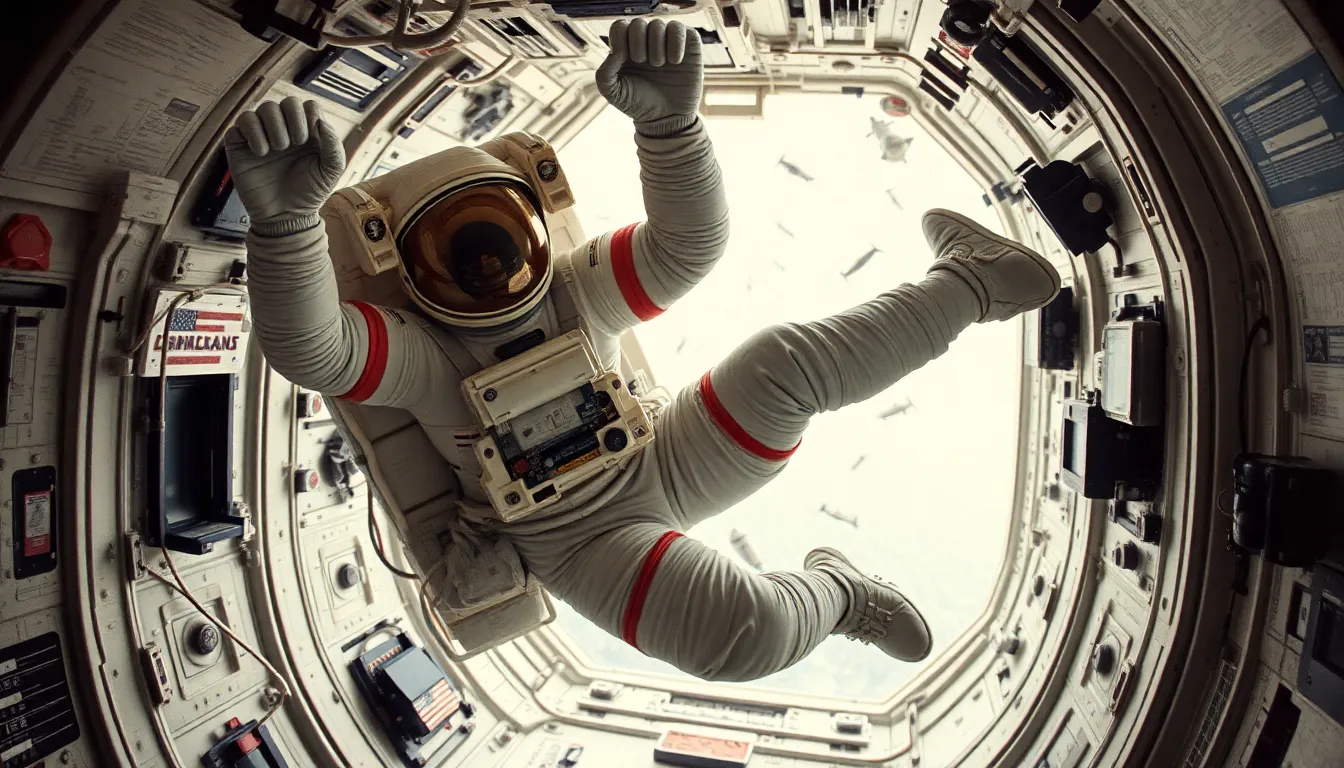Table of Contents
ToggleEver wondered what it feels like to float like a balloon at a kid’s birthday party? Welcome to the fascinating world of zero gravity, where the laws of physics take a vacation and humans can experience weightlessness. In this mind-bending realm, astronauts glide through their spacecraft like they’re on a cosmic rollercoaster, and even the simplest tasks become a hilarious challenge.
What Is Zero Gravity?
Zero gravity offers a remarkable experience characterized by a sensation of weightlessness. In this state, conventional physics appears altered, facilitating a unique environment for astronauts and experiments.
Definition and Concept
Zero gravity, often referred to as microgravity, indicates an environment where the effects of gravity become negligible. Objects in such conditions experience free fall, which allows them to float freely. This phenomenon typically occurs in spacecraft orbiting Earth. While gravity still exists, the spacecraft’s velocity creates a balance, causing occupants to perceive no weight. This intriguing condition transforms how humans interact with their surroundings, resulting in a different experience during everyday tasks.
Common Misconceptions
Many misunderstand the idea of zero gravity, thinking it means no gravity at all. Objects still experience gravity in this state, but they’re in free fall. The sensation of floating results from the spacecraft’s orbital motion, counterbalancing gravitational pull. Some believe only space has zero gravity, but significant drops, such as those in parabolic flights, briefly simulate similar effects. Another common myth involves thinking astronauts can easily dart in any direction; managing movement in microgravity involves increased effort and awareness.
Effects of Zero Gravity on the Human Body

The impact of zero gravity on the human body is significant. Changes occur both physiologically and psychologically in microgravity environments.
Physiological Changes
Muscles weaken due to the absence of gravitational force. Astronauts experience muscle atrophy, particularly in the legs and back. Bone density decreases as well, leading to an increased risk of fractures after returning to Earth. Cardiovascular system adjustments also emerge, as the heart shapes itself to adapt to a lack of resistance. Fluid shifts occur, causing swelling in the face and changes in vision as the ocular pressure increases. Researchers estimate that astronauts can lose up to 1% of bone mass per month in space, emphasizing the importance of resistance exercises while in orbit.
Psychological Impacts
Isolation and confinement can lead to psychological stress in zero gravity. Astronauts may experience mood swings, anxiety, or feelings of loneliness during extended missions. Changes in sleep patterns often hinder performance and well-being. Additionally, the lack of visual cues can disrupt spatial awareness. Some studies indicate that cognitive performance might decline, affecting decision-making abilities in prolonged microgravity environments. To counteract these effects, missions often include scheduled recreation and communication with loved ones, highlighting the role of mental health support in space.
Zero Gravity in Space Exploration
Zero gravity plays a critical role in space exploration. It influences various missions and research initiatives.
Historical Milestones
The first human experience of weightlessness occurred during the Vostok 1 mission in 1961 when Yuri Gagarin orbited Earth. This groundbreaking event marked a significant achievement in human spaceflight. Later, the Apollo missions provided astronauts with extensive exposure to microgravity during lunar missions. Research aboard Skylab in the 1970s helped scientists understand the effects of long-term weightlessness on the human body. Additionally, the launch of the Space Shuttle program facilitated numerous studies in zero gravity, contributing valuable data to space medicine. Each milestone has laid the groundwork for understanding how to safely navigate and conduct research in the unique challenges of outer space.
Current Research and Experiments
Today, ongoing research focuses on the implications of zero gravity for human health and performance. NASA conducts numerous experiments aboard the International Space Station (ISS) to study fluid dynamics and material properties in microgravity. Investigations into bone density loss continue to reveal crucial insights for future missions to Mars and beyond. Researchers also examine the effects of radiation exposure during extended space travel, assessing possible health risks to astronauts. Furthermore, studies involving plant growth in microgravity aim to support potential long-term human habitation on other celestial bodies. These investigations underscore the importance of understanding zero gravity’s effects to ensure the health and well-being of astronauts during and after their missions.
Applications of Zero Gravity
Zero gravity plays a vital role in various fields, including medicine and technology. These applications showcase how microgravity contributes to advancements that benefit life on Earth.
Medical Advancements
Research conducted in microgravity aids in medical breakthroughs. Scientists utilize the unique environment to study cellular behavior, providing insights into cancer treatment and drug delivery mechanisms. The absence of gravitational forces reveals how specific cells behave, enhancing our understanding of diseases. For instance, experiments in space have shown that certain cancer cells grow more aggressively in microgravity. Understanding these changes may lead to more effective therapies. Additionally, studying fluid dynamics in zero gravity improves the design of pharmaceuticals and surgical techniques. Collaborations with space agencies bring cutting-edge solutions back to Earth, positively impacting human health.
Innovations in Technology
Technological advancements emerge from zero gravity experiments. Engineers develop innovative materials in space that improve manufacturing processes. For example, creating alloys and composites without gravity results in superior strength and durability. These materials find applications across aerospace, automotive, and medical fields. Robotics also benefits, as testing in microgravity enhances the design of machines for remote or hazardous environments. Furthermore, satellite technology continues to grow due to research conducted in space. Each experiment conducted in microgravity serves as a catalyst for technological breakthroughs, shaping the future of various industries.
Zero gravity captivates the imagination and challenges our understanding of physics. The unique conditions of microgravity not only transform the way astronauts move but also significantly impact their physical and mental health. As research continues aboard the ISS and beyond, the insights gained are paving the way for advancements in medicine and technology.
Understanding the implications of zero gravity is crucial for future space exploration and the well-being of astronauts. With ongoing studies focusing on human adaptation and innovative applications, the mysteries of microgravity hold the potential to enhance life both in space and on Earth. The journey into this weightless realm is just beginning, and its discoveries will shape the future of human exploration and scientific progress.





